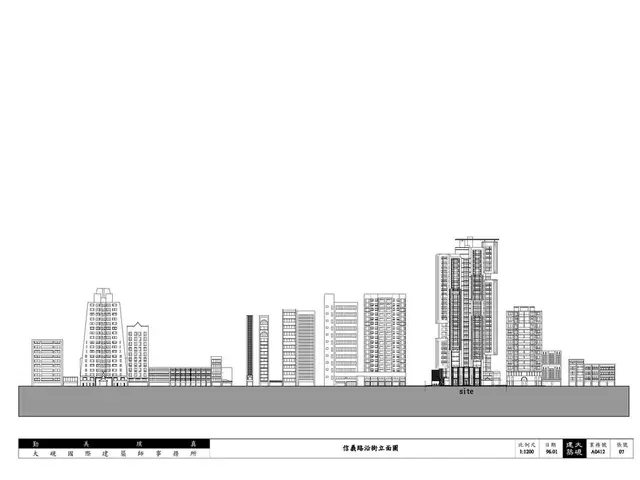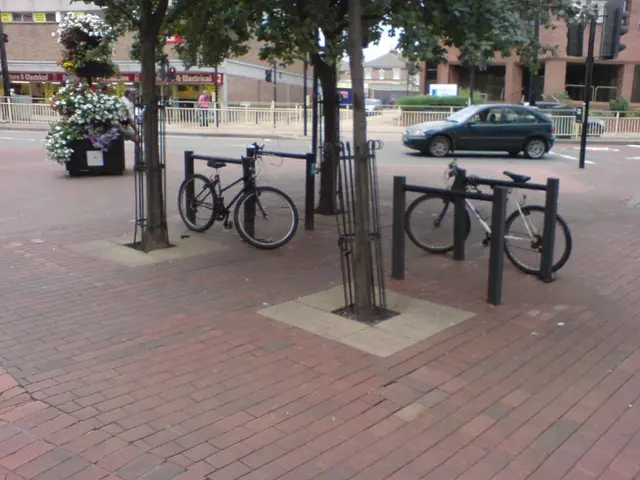Tropical Storms vs. Tropical Depressions: Nailing the Differences
Tropical Storm vs. Tropical Depression: Crucial Distinctions
During the summer season, it's easy to get lost in the lingo of tropical weather events. However, knowing the difference between a tropical storm and a tropical depression can be critical - especially for those living in coastal areas or prone to severe weather conditions.
This guide breaks down the key distinctions to help you stay informed and safe!
A Closer Look at Tropical Depressions
A tropical depression is a low-pressure weather system that brews over warm tropical waters, with wind speeds of up to 38 mph. These are the baby steps of a developing tropical cyclone.
While tropical depressions may bring heavy rain and powerful winds, the intensity is typically much lower compared to stronger storms. Generally, they originate in regions with warm ocean temperatures, absorbing moisture and heat to fuel the storm.
Compared to more developed systems, a tropical depression features a less defined circulation, lacking the well-organized structure of a tropical storm. It may evolve into a tropical storm or weaken and merge with another system.
Enter the Tropical Storm
When wind speeds range between 39 and 73 mph, we're talking about a tropical storm. These weather systems are a step-up from a tropical depression, delivering more severe weather conditions.
Tropical storms often bring strong winds, heavy rainfall, and stormy seas, plus the potential for severe damage, especially in inhabited areas. Contrary to tropical depressions, a tropical storm boasts a defined circulation, and the winds are strong enough to pose a risk to structures.
Given favorable conditions, like warm ocean waters and beneficial wind patterns, a tropical storm can transform into a hurricane.
Key Differences: A Side-by-Side Comparison
Wind Speed
Wind speed is the most evident difference between a tropical storm and a tropical depression. Tropical depressions barely touch the speed limit, with winds up to 38 mph. On the other hand, a tropical storms' winds travel between 39 and 73 mph, resulting in stronger winds and a higher risk of damage.
Storm Intensity
Tropical depressions prove significantly weaker than tropical storms. Although both can lead to chaotic weather patterns, such as heavy rainfall and strong winds, tropical storms yield more destructive effects.
Tropical storms can result in flooding, tree damage, power outages, and disruptions. Conversely, tropical depressions primarily cause rainfall and gusty winds, though they can still be a menace in vulnerable areas.
Structure and Organization
A tropical depression lags behind in terms of structure compared to a tropical storm. While both weather systems feature low-pressure centers, a tropical depression lacks the organized circulation exhibited by a tropical storm. The increased wind strength in a tropical storm leads to better-defined systems with well-organized storm patterns.
Development and Progression
A tropical depression is still in its nascent stages as a tropical cyclone. It might continue to dissipate or intensify into a tropical storm. In contrast, a tropical storm has already achieved a more advanced stage and can evolve into a hurricane if optimal circumstances persist.
The Impacts
Tropical Depression
Although a tropical depression is generally less destructive than a tropical storm, it can generate intense rainfall, resulting in flooding in vulnerable regions. The winds are usually weaker but can bring down trees and power lines in susceptible areas. Coastal zones may experience surging seas and increased chances of rip currents.
Tropical Storm
Tropical storms are riskier due to their greater wind speeds and capacity to cause widespread damage. Heavy rainfall from a tropical storm can lead to significant flooding, particularly in low-lying areas or regions with poor drainage. Storm surges are also a concern when the storm makes landfall near the coast. Wind damage, including toppled trees, power outages, and structural damage to buildings, is common in storm-affected regions.
How Our Website Can Help
Acquiring knowledge about tropical storms and tropical depressions can empower you to make sound decisions when it comes to weather preparedness. Our website exists to assist you in safeguarding your property from all types of weather events.
Connect with us today to learn more about building inspections, weather damage claims, maintenance, appraisals, and other valuable services. Stay up-to-date, stay prepared, and respond effectively as weather conditions unfold.
A tropical storm, with wind speeds ranging from 39 to 73 mph, is a step-up from a tropical depression, featuring stronger winds and delivering more severe weather conditions such as heavy rainfall, stormy seas, and potential structural damage. On the other hand, a tropical depression, with wind speeds of up to 38 mph, is a less organized and less destructive weather system that may cause heavy rain and powerful winds but is typically much weaker compared to a tropical storm.
Our website is dedicated to helping you stay informed and prepared for weather events by offering valuable services like building inspections, weather damage claims, maintenance, and appraisals. Connect with us today to empower yourself to make sound decisions and safeguard your property from all types of weather events.







